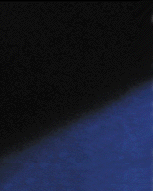|
|
|
| Celebrations Christmas and New Year in Korea |
| The origins of Christmas celebrations are based on western culture and Christianity, however it has become a universal holiday that most of the world enjoys today. In Korea Christmas is celebrated between family, lovers, and friends. |
|
Christmas is a magical time that makes many feel youthful and carefree again. During the build up to Christmas in the month of December carols are played everywhere, and anticipation builds. In the past Buddhists would observe Christmas by lighting the candles around the house and waiting for a descendent of God. Although this practice is less widespread now the cultural importance and origins of the holiday are remembered.
Christmas is not only seen as a Christian festival in Korea, it is also a day that young lovers celebrate. Greeting cards and presents are exchanged and on Christmas Eve young lovers share romance. This is a time to show affection to loved ones. The majority of youngsters go shopping, drinking and dancing. They are always looking for the best dance club or live concert to celebrate in the best way.
During the holidays, everyone goes out and enjoys themselves, so the streets are extremely crowded with people, especially MyeongDong, Jongno, Daehangno and Gangnam. Be careful as during the holidays, most bars and nightclubs might charge you more than usual!
One impressive sight during this season is the Salvation Army's charity pot.
They came from the United States and their presence is very familiar to Koreans. In difficult situations caused by economic crisis or natural disasters, the Salvation Army's charity was a great help. They often use donations to help Korea¡¯s poorer people. Last year they collected money to help after the Korean economic crisis during the IMP. They distributed presents on Christmas Day. Many large Korean corporations now make donations to the Salvation Army.
The Night-Watch Bell on New Year's Eve
In Korea New year's eve is referred to as 'Jeya'. As part on the celebrations in Jongno, Seoul, a bell is rung 33 times at Bosingak. This tradition originated from The Joseon period. At first it marked the end of the previous night¡¯s curfew in the early morning. Striking the bell 28times (I-Gyeong) opened the curfew at 10 o'clock and then striking 33 times (O-Gyeong) at 4 am marked the end of the curfew. 28 times signified ¡®good night¡¯ and 33 times meant ¡®have a peaceful journey.¡¯
The BoShinGak bell was build in 1468 and used in a temple. Its' height is 3.647m, It is 2.228m in diameter and weighs 19.66 tones. It has been located in Jongno since 1619 after the Japanese [Hideyoshi's] invasion of Korea in 1592.
Under Japanese colonization for 36 years and at war with North Korea for 6.25 years, South Korea didn¡¯t ring the bell for a long period, until 1953. Since 1953 the ringing of the bell was performed every single year. The bell¡¯s interior was damaged with a crack in 1980, but with donations from the public enough money was raised to repair the bell in 1985.
Therefore hearing the bell ring on New Year¡¯s Eve means a lot to Koreans. It brings back regrettable memories, but also signifies hope that all our wishes will come true in The New Year. Today people use the day to reflect upon the past and build plans for the coming year.
|
|
|
|
| 26-11-2001 |
|
|
|
|

